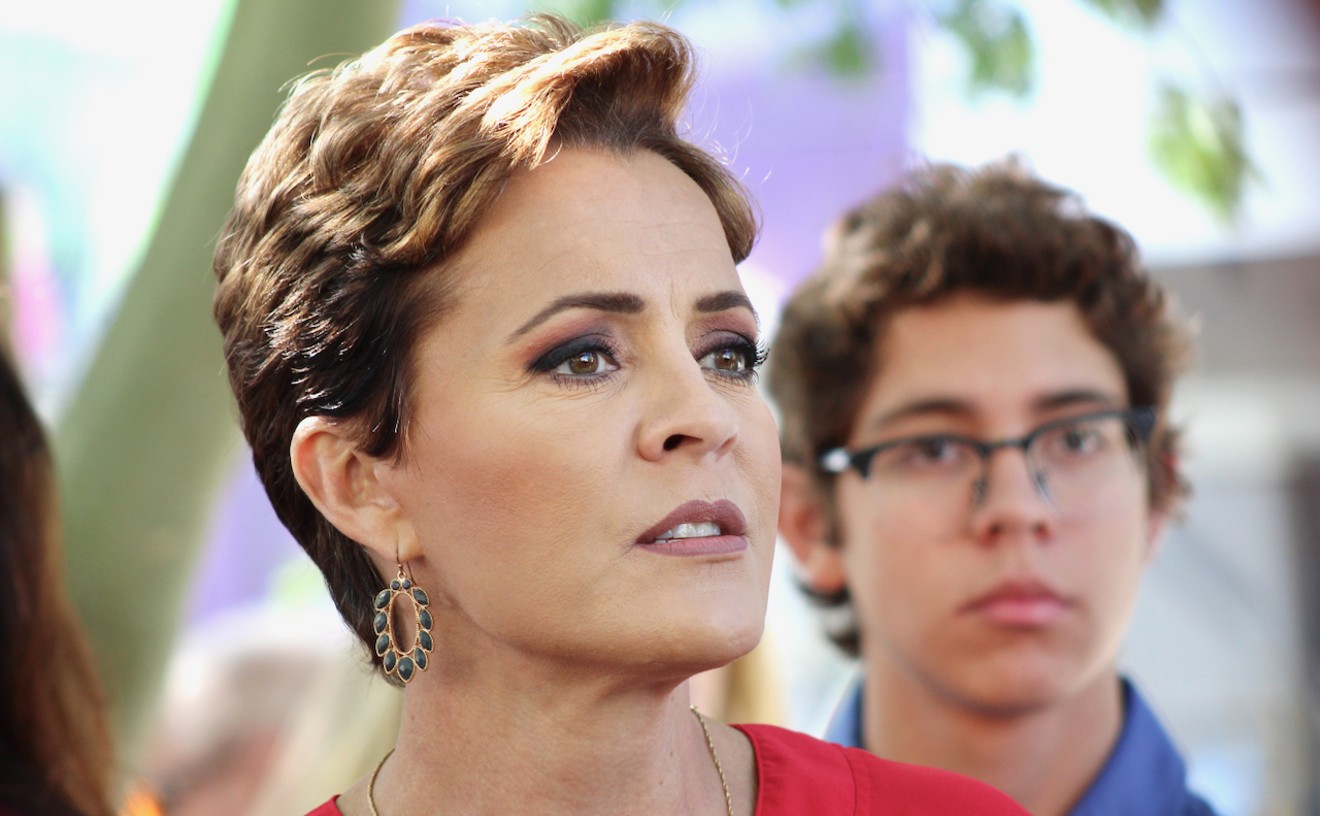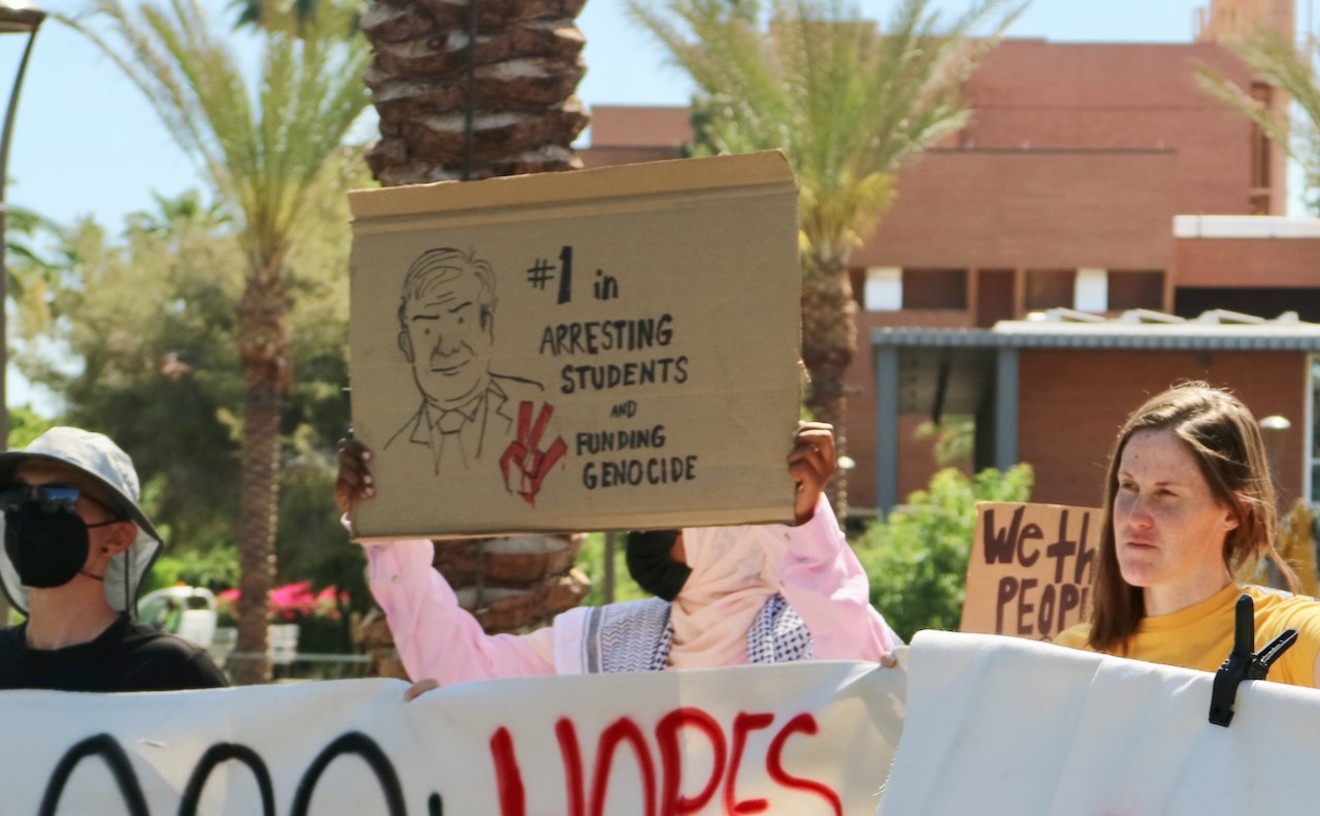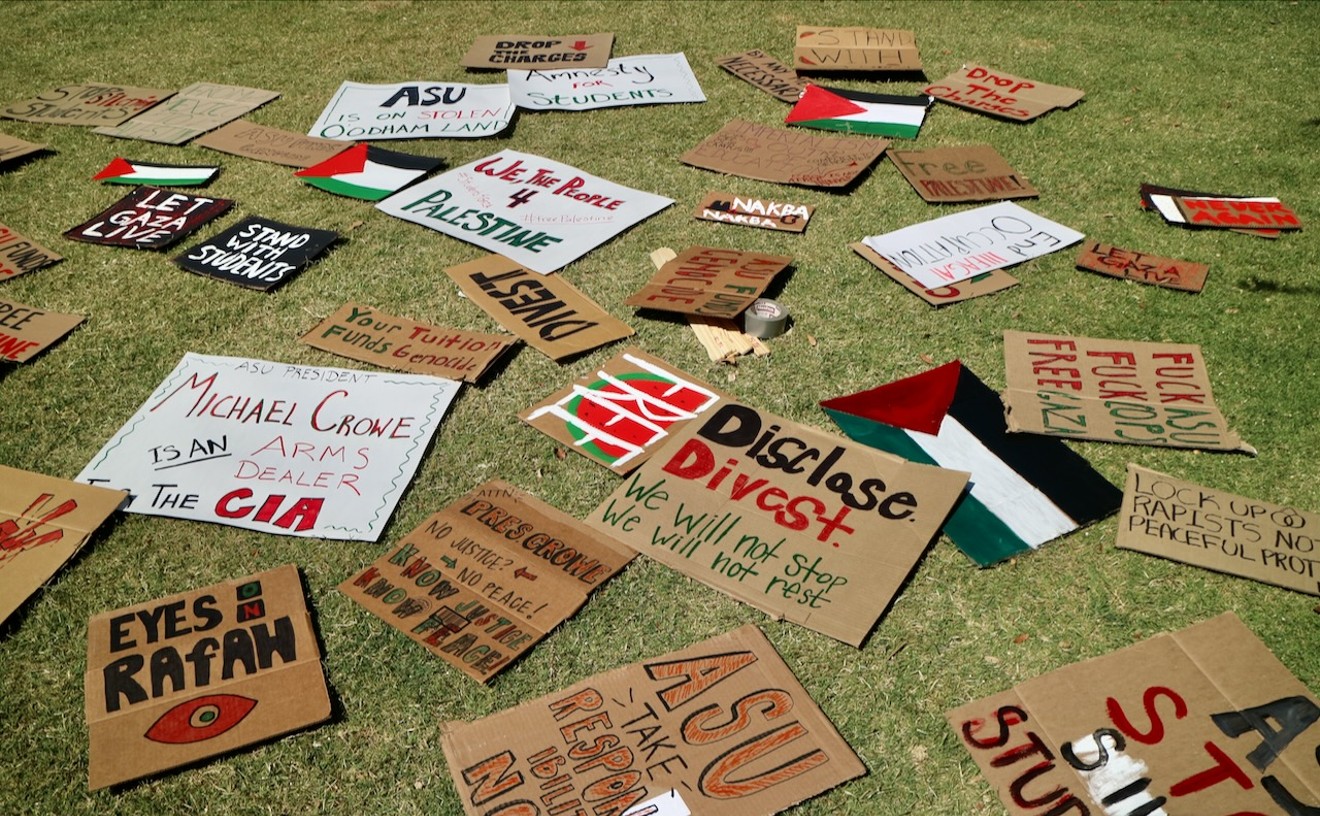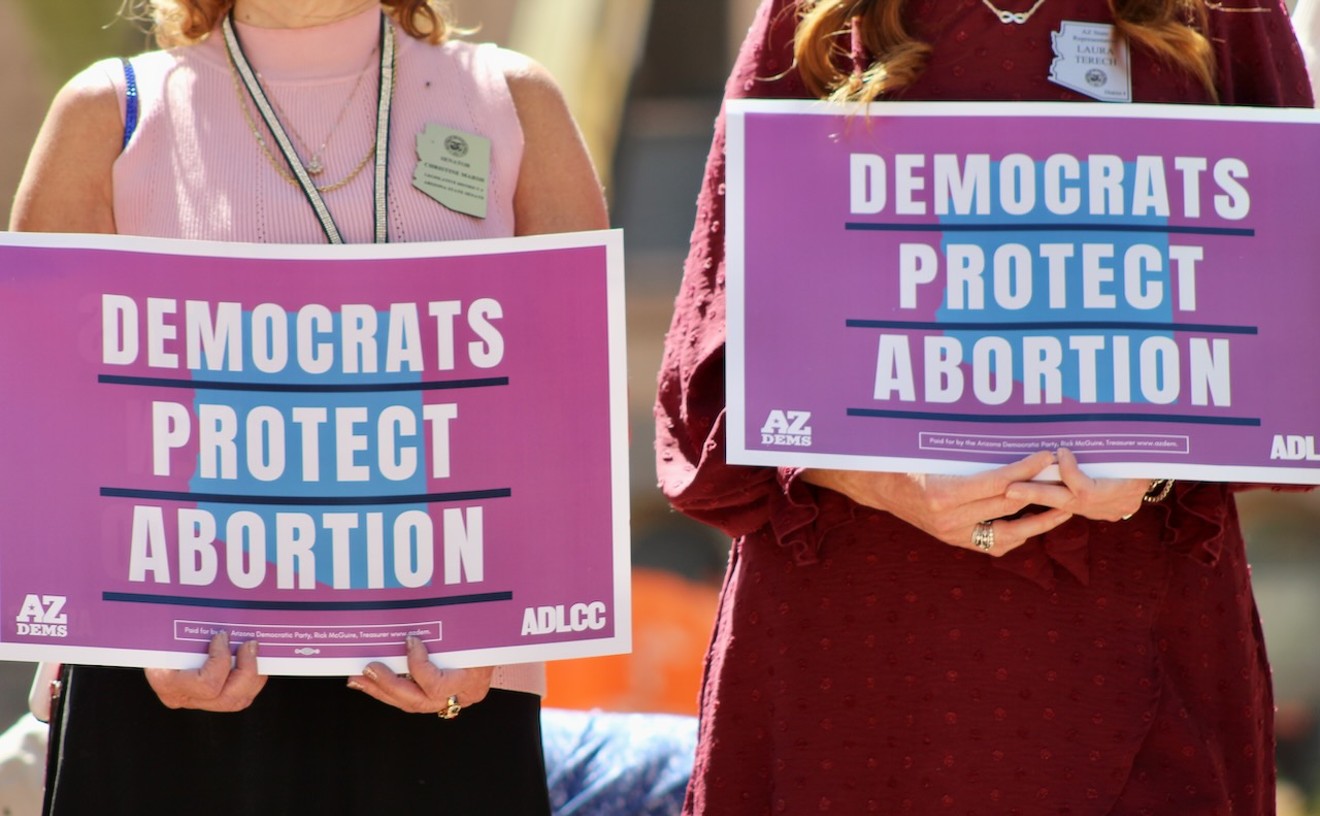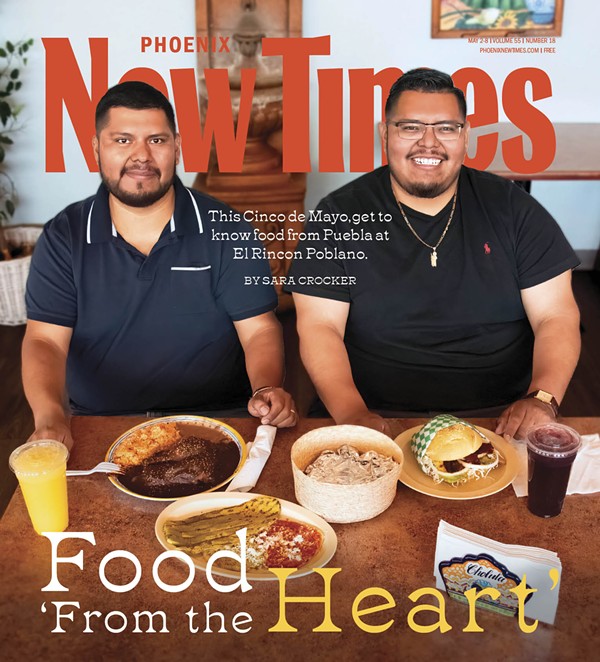Fees paid by the truck owners help defray operating expenses for the newly opened Carver-Phoenix Union Colored High School Museum and Cultural Center at 415 East Grant.
The bleachers that once looked out on the football field remain. Carver alums call the bleachers the "stadium."
From the asphalt below, Tommie Williams looks up at the bleachers and remembers cheering the Carver High School Monarchs to yet another football victory.
Now a retired plumber with a few extra pounds to spare, Williams, 71, was so skinny and small when he attended Carver High that he was too shy to talk to girls or join school clubs. But a good football game--Carver regularly trounced better-equipped, larger teams--transformed him into an exuberant fan. To this day, Williams remembers the marching band at halftime, and how no one would ever guess the band members wore secondhand uniforms that had been repeatedly altered and mended by the girls in Carver's home economics classes.
But most of all, Tommie Williams remembers how the high school offered African-American kids a sense of identity and safety in a town where real estate agents refused to sell homes north of Washington Street to black families, where moviehouses and soda fountains were segregated, where kids learned early that a sign saying "We reserve the right to refuse service to anyone" actually meant blacks were prohibited.
"Everybody doesn't have to be a basketball star or a drug dealer to be a success," says Williams. "There are too many quiet accomplishments that we don't notice."
All of this explains why Williams and dozens of other Carver alumni gathered at the school May 25. They stood on the hardwood auditorium floor where they once danced and played basketball, relishing the dedication of the new Carver-Phoenix Union Colored High School Museum and Cultural Center.
The alumni, many of whom are octogenarians, collected $200,000 to purchase the 70-year-old stucco building and its four-and-a-half-acre campus from the Phoenix Union High School District, which had used the school as a warehouse since 1954, when the U.S. Supreme Court outlawed school segregation.
The alumni convinced sports mogul Jerry Colangelo to donate $100,000 to renovate the school auditorium so that neighborhood kids would have a place to meet, shoot hoops.
In part because their ranks include seasoned African-American politicos like former Phoenix councilman Calvin Goode and former state senator Cloves Campbell, the aging alumni obtained $141,000 from the Phoenix Parks Board to purchase the facility. Another $35,000 Community Development Block Grant was obtained to pay Orcutt Winslow Partnership, a Phoenix architectural firm, to draw the plans to transform the crumbling school grounds into a modern museum and community center. The money will also pay for professional museum consultants.
The building has yet to be fully renovated, but a museum of sorts is already in place. Its homespun charm may well be lost when the museum becomes a big-city institution.
Tommie Williams, for instance, has converted a classroom into a "Religious Roots" room that aims to tell the story of Phoenix's African-American churches, which were some of the few places where blacks could meet. He's collected pews, a pulpit, an old record player and scratchy Phoenix church-choir records, a piano with a rickety bench, printed materials detailing local church histories.
There is a room dedicated to famous Phoenix sports figures, like John Ford Smith, one of the first blacks to be recruited by baseball's New York Giants, and his son, John Ford Smith II, who played for the Harlem Globetrotters.
In fact, the younger Smith, now 49, is the "kid" member of the museum board of directors. He is also one of its primary contributors--the Smith family moved to Phoenix in 1902, after one of the Smith patriarchs had served with the black Buffalo Soldiers. The younger Smith's mother, one of the first black teachers in Phoenix, taught at Carver High.
There's also an exhibit on black journalism, started by 83-year-old Richard Harris, who in 1963 became the first African-American reporter to join the staff of the Arizona Republic.
"I crashed open the gate for the younger guys," says Harris, who left the Republic after he was "promoted" to religion editor following what he describes as a particularly powerful piece he'd written on slumlords. Harris figures the paper's management heard complaints about his story and put him in the religion slot to render him harmless. After resigning, he got a job at the Phoenix Urban League and wrote four books in his spare time.
Ten years ago, while conducting research, he became aware of a rich, unnoticed history, complete with valuable artifacts. Harris approached all the local museums and suggested exhibits on the history of African Americans in Phoenix.
"Nothing happened, as usual," says Harris.
Which explains why Harris and his Carver classmates decided to build a museum of their own.
In the square room with a tattered linoleum floor that was once the Carver school cafeteria, Ruth Payne Franklin stares at a "cotton picking" display she put together for the museum. "This land is my land, too" the display sign reads. There are cotton bolls still on stems, and a copy of an old ad that seeks 5,000 "Negro" families to pick 240,000 acres of cotton in the Phoenix area.
Franklin had a special reason to assemble the display. Her family moved to Arizona in 1942 to pick cotton. She yearned for an education, but was not allowed to attend schools near her East Valley home.
So she walked several miles, then boarded a bus to Carver High.
She has teenage memories of the cafeteria--she rarely had the 35 cents she needed to buy lunch. Instead, she budgeted 17 cents to pay for a hot dog and ate it on the lawn beneath the trees that still exist today.
These days, Franklin is an art teacher, mostly to poor white kids.
The museum welcomes visitors of all races, genuinely, and while the idea that Phoenix was a meanspirited, segregated town is uncomfortable for many, the museum's founders say they harbor no bitterness.
What they were taught at Carver High, they say, is to treat all people with kindness. No matter what.
Ivery Hemphill, class of 1942, was once presented with a puppy by a white family. On one condition. The dog was to be named "Nigger." She didn't care. She loved the dog. She later went on to be a prominent local businesswoman.
Hattie Day Colbert, class of 1951, remembers the day her son returned from his integrated high school. He'd presented a paper about Phoenix during the segregated years (roughly the first half of the 20th century). The kids in the class, says Colbert, thought her son had made it all up.
Laura Dungee Harris, wife of Richard Harris, was recruited to Phoenix from the Midwest by an agricultural labor broker named "Lawyer Fortune." She made the trip as a child with her family, packed into a train with hundreds of others seeking a better life. She didn't understand the concept of segregation until she got much older. She says she simply accepted that she couldn't attend larger, better-equipped schools.
In fact, she thinks the overt racism of segregation, in which "you at least knew where you stood," is preferable to the "under the rug" racism of today.
"When it was out in the open," she says, "you could face it."
Oddly, while the alums of Carver High understand that desegregation was necessary, they lament the loss of schools like Carver. Kids really did feel safe there, they say, and they were instilled with the sense that they were just as good as anyone else. When their own children went to desegregated schools, they were often ignored or encouraged to pursue trades, not careers.
"Carver was like the Harlem Renaissance," says Ethel Stubbs Boyer, who graduated in 1947 and went on to become a prominent teacher and civil rights activist in New Mexico. Nevertheless, she says, Carver alums knew only too well that Phoenix was a difficult place for blacks.
"The things that were done to us, that we went through, have to be told," Stubbs Boyer says.
"And nobody will ever tell it if we don't.





